Gerhard P. Fettweis
Cross-layer Integrated Sensing and Communication: A Joint Industrial and Academic Perspective
May 16, 2025



Abstract:Integrated sensing and communication (ISAC) enables radio systems to simultaneously sense and communicate with their environment. This paper, developed within the Hexa-X-II project funded by the European Union, presents a comprehensive cross-layer vision for ISAC in 6G networks, integrating insights from physical-layer design, hardware architectures, AI-driven intelligence, and protocol-level innovations. We begin by revisiting the foundational principles of ISAC, highlighting synergies and trade-offs between sensing and communication across different integration levels. Enabling technologies, such as multiband operation, massive and distributed MIMO, non-terrestrial networks, reconfigurable intelligent surfaces, and machine learning, are analyzed in conjunction with hardware considerations including waveform design, synchronization, and full-duplex operation. To bridge implementation and system-level evaluation, we introduce a quantitative cross-layer framework linking design parameters to key performance and value indicators. By synthesizing perspectives from both academia and industry, this paper outlines how deeply integrated ISAC can transform 6G into a programmable and context-aware platform supporting applications from reliable wireless access to autonomous mobility and digital twinning.
Secret Key Generation Rates for Line of Sight Multipath Channels in the Presence of Eavesdroppers
Apr 25, 2024



Abstract:In this paper, the feasibility of implementing a lightweight key distribution scheme using physical layer security for secret key generation (SKG) is explored. Specifically, we focus on examining SKG with the received signal strength (RSS) serving as the primary source of shared randomness. Our investigation centers on a frequency-selective line-of-sight (LoS) multipath channel, with a particular emphasis on assessing SKG rates derived from the distributions of RSS. We derive the received signal distributions based on how the multipath components resolve at the receiver. The mutual information (MI) is evaluated based on LoS 3GPP channel models using a numerical estimator. We study how the bandwidth, delay spread, and Rician K-factor impact the estimated MI. This MI then serves as a benchmark setting bounds for the SKG rates in our exploration.
Joint Communication and Sensing for 6G -- A Cross-Layer Perspective
Feb 14, 2024
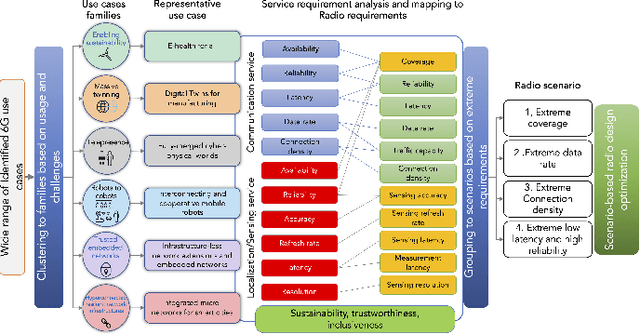
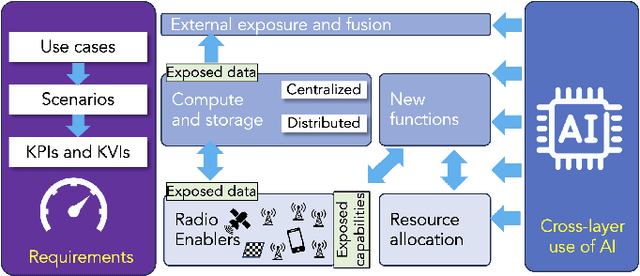
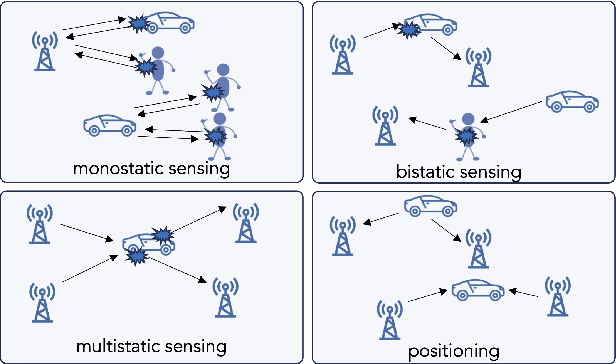
Abstract:As 6G emerges, cellular systems are envisioned to integrate sensing with communication capabilities, leading to multi-faceted communication and sensing (JCAS). This paper presents a comprehensive cross-layer overview of the Hexa-X-II project's endeavors in JCAS, aligning 6G use cases with service requirements and pinpointing distinct scenarios that bridge communication and sensing. This work relates to these scenarios through the lens of the cross-layer physical and networking domains, covering models, deployments, resource allocation, storage challenges, computational constraints, interfaces, and innovative functions.
Comparing Iterative and Least-Squares Based Phase Noise Tracking in Receivers with 1-bit Quantization and Oversampling
Sep 12, 2023



Abstract:High data rates require vast bandwidths, that can be found in the sub-THz band, and high sampling frequencies, which are predicted to lead to a problematically high analog-to-digital converter (ADC) power consumption. It was proposed to use 1-bit ADCs to mitigate this problem. Moreover, oscillator phase noise is predicted to be especially high at sub-THz carrier frequencies. For synchronization the phase must be tracked based on 1-bit quantized observations. We study iterative data-aided phase estimation, i.e., the expectation-maximization and the Fisher-scoring algorithm, compared to least-squares (LS) phase estimation. For phase interpolation at the data symbols, we consider the Kalman filter and the Rauch-Tung-Striebel algorithm. Compared to LS estimation, iterative phase noise tracking leads to a significantly lower estimation error variance at high signal-to-noise ratios. However, its benefit for the spectral efficiency using zero-crossing modulation (ZXM) is limited to marginal gains for high faster-than-Nyquist signaling factors, i.e., higher order ZXM modulation.
Blind Transmitter Localization Using Deep Learning: A Scalability Study
Jun 06, 2023Abstract:This work presents an investigation on the scalability of a deep leaning (DL)-based blind transmitter positioning system for addressing the multi transmitter localization (MLT) problem. The proposed approach is able to estimate relative coordinates of non-cooperative active transmitters based solely on received signal strength measurements collected by a wireless sensor network. A performance comparison with two other solutions of the MLT problem are presented for demonstrating the benefits with respect to scalability of the DL approach. Our investigation aims at highlighting the potential of DL to be a key technique that is able to provide a low complexity, accurate and reliable transmitter positioning service for improving future wireless communications systems.
Experimental Performance of Blind Position Estimation Using Deep Learning
Jun 06, 2023
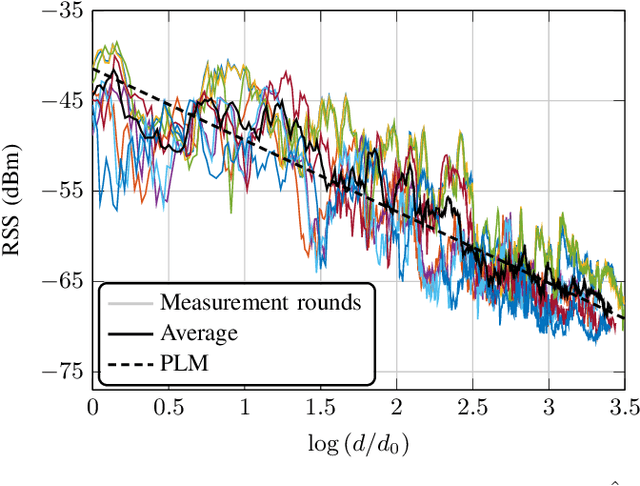
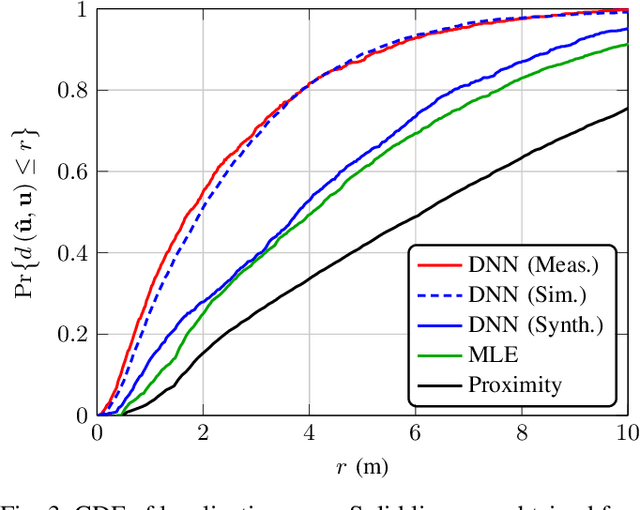
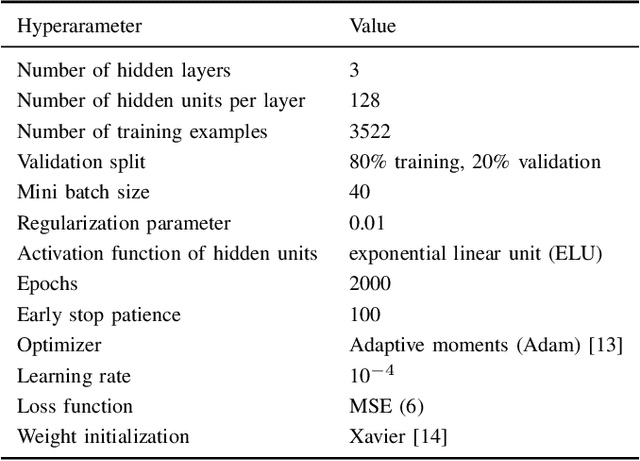
Abstract:Accurate indoor positioning for wireless communication systems represents an important step towards enhanced reliability and security, which are crucial aspects for realizing Industry 4.0. In this context, this paper presents an investigation on the real-world indoor positioning performance that can be obtained using a deep learning (DL)-based technique. For obtaining experimental data, we collect power measurements associated with reference positions using a wireless sensor network in an indoor scenario. The DL-based positioning scheme is modeled as a supervised learning problem, where the function that describes the relation between measured signal power values and their corresponding transmitter coordinates is approximated. We compare the DL approach to two different schemes with varying degrees of online computational complexity. Namely, maximum likelihood estimation and proximity. Furthermore, we provide a performance comparison of DL positioning trained with data generated exclusively based on a statistical path loss model and tested with experimental data.
 Add to Chrome
Add to Chrome Add to Firefox
Add to Firefox Add to Edge
Add to Edge